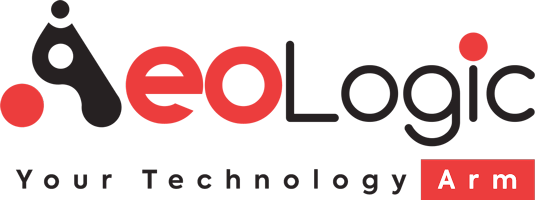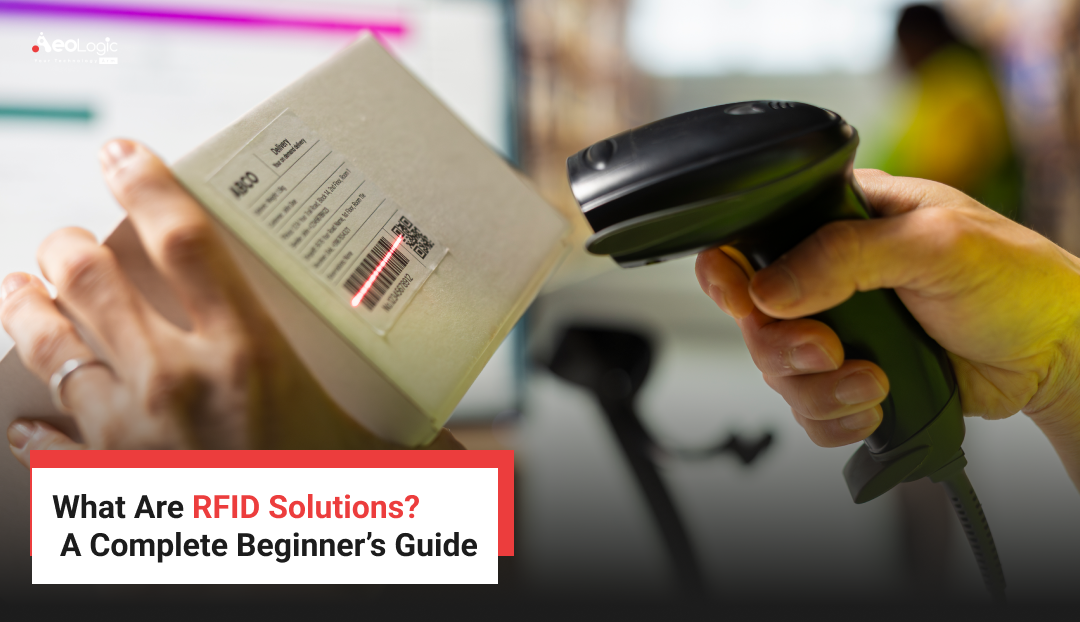Nowadays, you must have seen small tags or chips used in malls, warehouses, or even ID cards. These small chips can track things without even touching them. This technology is called RFID, and it is becoming popular day by day in almost every industry. But what are RFID solutions actually? How do they work? Why are companies using them so much? In simple words, RFID means Radio Frequency Identification. It is a method to identify and track objects, people, or animals using radio waves. RFID solutions are systems that use RFID technology for different purposes like tracking goods, managing inventory, controlling access, and more. This beginner’s guide will explain what are RFID solutions, how they work, what are the types, their benefits, challenges, and where they are used. If you have ever wondered how stores track items automatically or how toll gates work without stopping cars, this guide is for you.
What Are RFID Solutions?
Let’s understand it in very simple terms. RFID solutions are systems that use RFID tags and RFID readers to identify things automatically.
-
RFID Tag: It is a small chip or label that stores data.
-
RFID Reader: It is a device that reads the data from the tag using radio signals.
When the reader sends out a radio wave, the tag responds with its stored information. This data can be anything — like the product name, ID number, location, or owner details.
It’s like a barcode, but better. Barcodes need to be scanned one by one and seen by the scanner. RFID does not need direct contact or line of sight. It can read multiple tags at once, even from a distance.
So basically, RFID solutions help in tracking and managing assets easily and quickly.
Why RFID Solutions Are Important
In today’s world, everything is about speed and accuracy. Manual tracking of things is slow and full of mistakes. RFID makes it automatic and fast.
Here are some simple reasons why RFID is important:
-
Saves Time – No need to count or scan items manually. RFID reads everything in seconds.
-
Increases Accuracy – Less chance of human error.
-
Better Security – You can track who entered where and when.
-
Inventory Control – You can see how much stock is available in real time.
-
Cost Saving – Though setup costs money, it saves labor and time later.
-
Data Insights – RFID data helps businesses make better decisions.
For example, in a warehouse, workers can scan thousands of boxes at once. In hospitals, equipment can be tracked easily. That’s how powerful RFID is.
How RFID Works – Step by Step
Many people think RFID is a complex technology, but it is actually quite simple to understand. Let’s see how it works in an easy way.
-
Tag is attached to an item
Every product, box, or card gets an RFID tag. This tag has a small microchip and antenna that store information. -
Reader sends out radio waves
The RFID reader gives out radio signals to search for nearby tags. -
Tag responds back
When the tag receives the signal, it sends back its stored information, like ID number or product details. -
Reader sends data to computer
The reader then passes that information to a computer system. -
Software processes data
The system or software reads that data and updates the records, such as showing what item was found and where it is.
It all happens in seconds, and you don’t even need to see or touch the tag. That’s why RFID is faster than barcodes or manual scanning.
Main Components of RFID Solutions
An RFID solution usually includes three important parts:
RFID Tag
A small chip or label that stores data. It can be attached to an object, card, or even inside an animal tag.
There are two main kinds:
-
Active Tags – Have their own battery and can send signals farther.
-
Passive Tags – Don’t have battery; they get power from the reader’s radio signal.
RFID Reader
This is a device that reads tags. It can be handheld, fixed, or even placed at gates and doors. It sends radio signals and receives data back from the tag.
RFID Software
The software collects and organizes the data received from the readers. It shows information like which item is where, how many are left in stock, or if something moved from one place to another.
Sometimes there are also antennae, servers, and network systems used to make the RFID system run smoothly.
Types of RFID Systems
There are three main types of RFID systems based on the frequency they use.
Low Frequency (LF) RFID
-
Works at 125–134 kHz.
-
Used for short-distance reading, like animal tagging or keycards.
-
Reading range is usually up to 10 cm.
High Frequency (HF) RFID
-
Works at 13.56 MHz.
-
Commonly used in ID cards, payment cards, and library systems.
-
Range up to 1 meter.
Ultra High Frequency (UHF) RFID
-
Works between 860–960 MHz.
-
Used in warehouses, logistics, and supply chain management.
-
Can read hundreds of tags at once from long distances (up to 12 meters).
Each type has its own use. For example, hospitals prefer HF RFID for patient wristbands, while warehouses use UHF for tracking boxes.
Real-Life Examples of RFID in Action
Let’s see where we can find RFID in real life.
Retail and Shopping
Stores like Walmart and Decathlon use RFID to track inventory. The system tells them exactly how many items are in stock without counting manually.
Toll Gates
In many cities, toll plazas use RFID tags on vehicles. When the car passes, the scanner reads the tag and automatically deducts money.
Employee ID Cards
Many offices use RFID cards for entry. Employees just tap their cards, and the gate opens.
Hospitals
Hospitals use RFID to track medical tools and patients. It saves time and helps prevent lost equipment.
Logistics and Warehouses
RFID helps in tracking goods from factories to stores. It reduces losses and delays.
Libraries
Books are tagged with RFID so that when a person borrows or returns a book, it is scanned automatically.
Benefits of RFID Solutions
RFID technology is becoming popular because it gives many benefits. Companies are using it to save time, money, and to make their work easier. Let’s look at some simple benefits.
Fast and Easy Tracking
RFID can read many tags at the same time. You don’t have to scan one by one like barcodes. This saves a lot of time, especially when you have thousands of items.
Less Human Mistakes
When people do manual work, mistakes happen. RFID systems reduce these mistakes because everything is automatic.
Better Visibility
You can see where your things are at any time. Whether it’s in the warehouse, on the truck, or in the store — RFID gives you full visibility.
Security
RFID also helps in security. You can track who entered a building or which product left the warehouse. This reduces theft and loss.
Cost Saving
At first, it may look costly to install RFID, but in the long run, it saves money by reducing labor and time.
Better Inventory Management
With RFID, stock updates happen in real time. You always know what is available, what is missing, and what needs restocking.
Customer Satisfaction
When you know your inventory and deliveries are accurate, customers get their orders on time. This makes them happy.
Challenges of RFID Solutions
Even though RFID is useful, it has some problems too. Every technology has pros and cons. Let’s see what issues companies face with RFID.
High Initial Cost
Buying RFID tags, readers, and software can be expensive at first. Small businesses may find it hard to afford.
Signal Interference
Sometimes metal objects or water can block the radio waves, making it hard for the reader to detect the tag.
Data Overload
RFID creates a lot of data. If not managed properly, it becomes confusing for staff.
Privacy Issues
Since RFID can track things and people, some people worry about privacy misuse.
Training Staff
Not all employees understand how to use RFID systems. Training is needed which takes extra time and effort.
Maintenance
RFID systems need regular maintenance to keep working properly. Broken tags or faulty readers can cause problems.
Industries Using RFID Solutions
RFID is used in almost every field now. Let’s look at some common industries where RFID helps the most.
Retail
Retail shops use RFID for inventory and anti-theft systems. They can check stock easily and stop shoplifting.
Manufacturing
Factories use RFID to track raw materials and finished products. It helps manage the production process.
Transportation and Logistics
Shipping companies use RFID to track goods while moving from one place to another. It avoids loss and delays.
Healthcare
Hospitals use RFID for patient wristbands, medicine tracking, and to keep record of medical tools.
Education
Universities use RFID cards for attendance and library systems.
Agriculture
Farmers use RFID to track animals and monitor their health conditions.
Government and Defense
Even governments use RFID for security and asset tracking in military and public offices.
The Future of RFID Solutions
RFID is already used in many places, but its future is even bigger. As technology keeps improving, RFID systems are becoming cheaper, faster, and smarter. Let’s see what we can expect in the coming years.
Smaller and Smarter Tags
In future, RFID tags will become very small and even more powerful. They will hold more data and work from longer distances.
Combination with IoT
RFID and IoT (Internet of Things) will work together. When RFID connects with sensors and online systems, everything can be tracked in real time from anywhere.
More Use in Daily Life
Soon RFID will be part of many simple things like bus cards, parking tickets, product tags, and smart homes. It will make our lives easier.
Better Data Analytics
Companies will use the data collected from RFID to understand trends, improve planning, and make smarter business decisions.
Environment Friendly
Many companies are working on eco-friendly RFID tags made of paper or biodegradable material to reduce plastic waste.
So, we can say the future of RFID looks very bright. It will keep helping businesses save money and manage work better.
Common FAQs About RFID Solutions
1. What does RFID stand for?
RFID means Radio Frequency Identification. It uses radio waves to read and identify tags attached to items, people, or animals.
2. What are RFID solutions used for?
They are used for tracking and managing things automatically — like goods in warehouses, patients in hospitals, or books in libraries.
3. What is the difference between RFID and barcode?
Barcodes need direct scanning and can read one item at a time. RFID does not need line of sight and can read many tags at once, even from distance.
4. Are RFID tags expensive?
The price depends on type. Passive tags are cheap, while active tags with battery are costlier. But overall, costs are coming down each year.
5. Can RFID track people?
Yes, but only if they wear RFID cards or tags. It’s used in offices and events for attendance or entry management.
6. How far can RFID read?
It depends on the type. Low-frequency RFID can read a few centimeters, and UHF RFID can read up to 10–12 meters or more.
7. Is RFID safe?
Yes, RFID uses low-power radio signals that are safe for humans and animals. But companies should protect data with security systems.
Conclusion
Now we clearly understand what are RFID solutions and why they are so important in today’s world. In simple words, RFID is a smart technology that helps us identify and track items using radio waves. It replaces slow manual work with fast, automatic systems.
From small retail stores to large factories and hospitals, RFID is helping everyone save time, reduce errors, and increase security. It also gives companies real-time information about their assets.
Of course, it has some challenges like cost, interference, and privacy concerns, but with the right planning and tools, those problems can be managed easily.
In the future, RFID will be even more advanced and common in daily life. It will connect with other technologies like IoT and cloud computing to make tracking and automation more powerful.
So, if you ever wondered how your metro card works, how malls stop theft, or how companies know exactly what’s in stock, now you know — the answer is RFID solutions.

Passionate about breaking down complex tech into simple ideas. Covers everything from AI and software development to gadgets and emerging tech trends.





